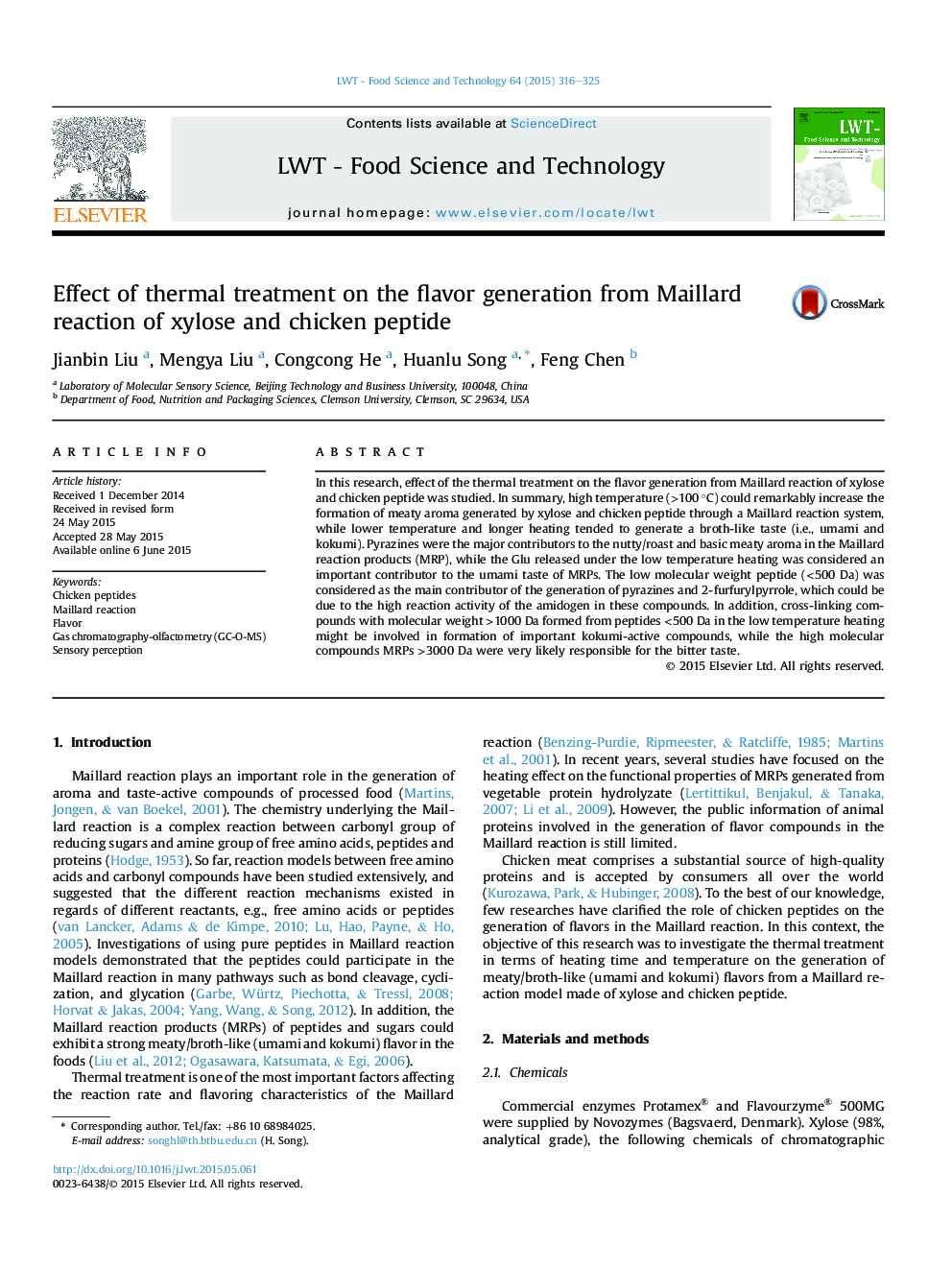| Article ID | Journal | Published Year | Pages | File Type |
|---|---|---|---|---|
| 6400783 | LWT - Food Science and Technology | 2015 | 10 Pages |
Abstract
In this research, effect of the thermal treatment on the flavor generation from Maillard reaction of xylose and chicken peptide was studied. In summary, high temperature (>100 °C) could remarkably increase the formation of meaty aroma generated by xylose and chicken peptide through a Maillard reaction system, while lower temperature and longer heating tended to generate a broth-like taste (i.e., umami and kokumi). Pyrazines were the major contributors to the nutty/roast and basic meaty aroma in the Maillard reaction products (MRP), while the Glu released under the low temperature heating was considered an important contributor to the umami taste of MRPs. The low molecular weight peptide (<500 Da) was considered as the main contributor of the generation of pyrazines and 2-furfurylpyrrole, which could be due to the high reaction activity of the amidogen in these compounds. In addition, cross-linking compounds with molecular weight >1000 Da formed from peptides <500 Da in the low temperature heating might be involved in formation of important kokumi-active compounds, while the high molecular compounds MRPs >3000 Da were very likely responsible for the bitter taste.
Related Topics
Life Sciences
Agricultural and Biological Sciences
Food Science
Authors
Jianbin Liu, Mengya Liu, Congcong He, Huanlu Song, Feng Chen,
